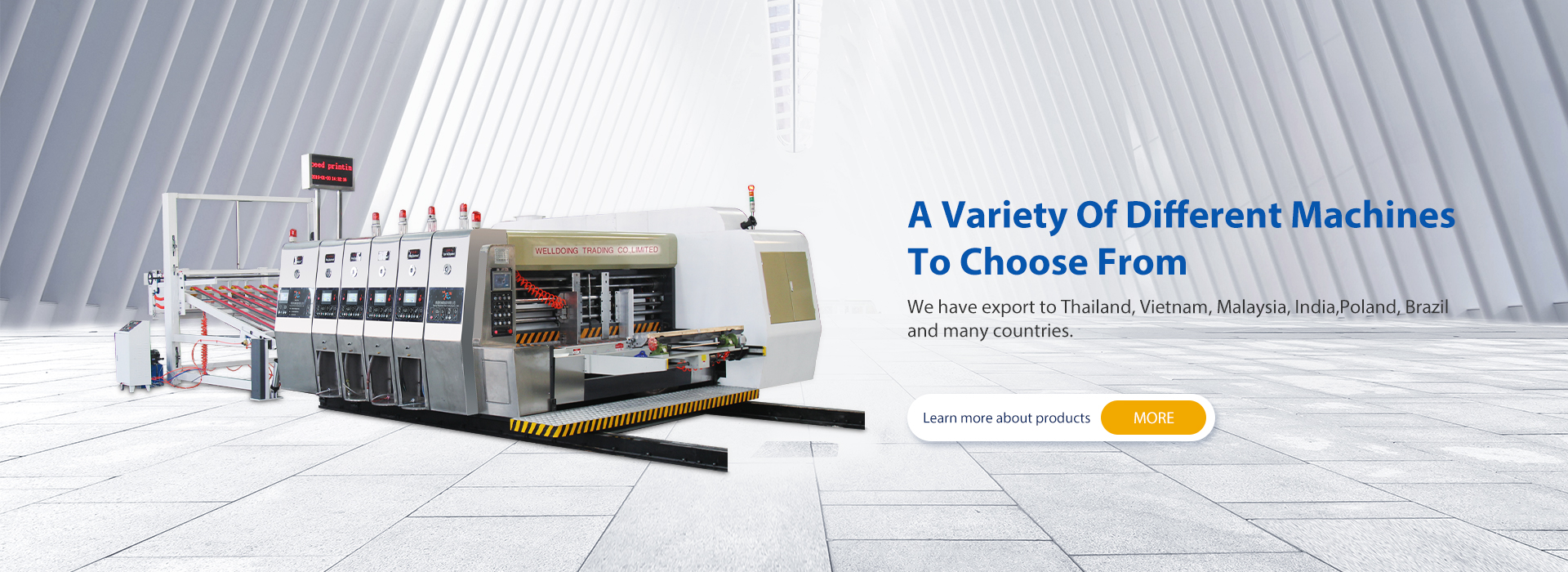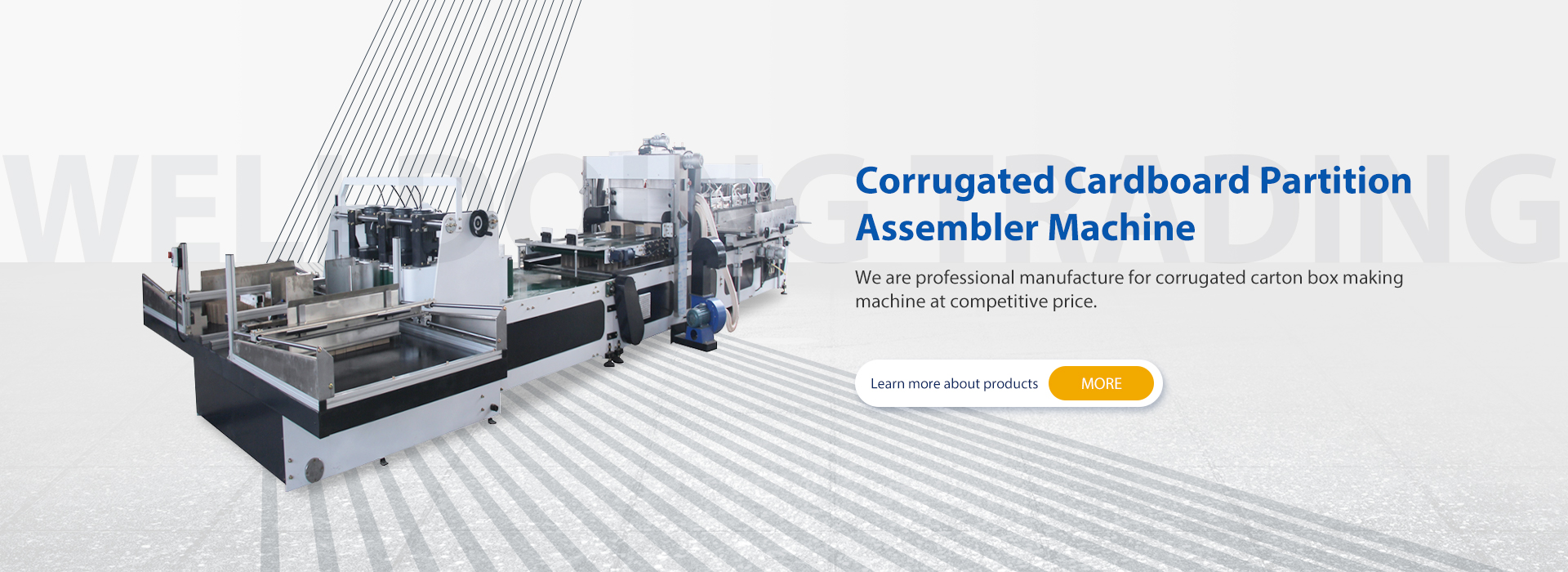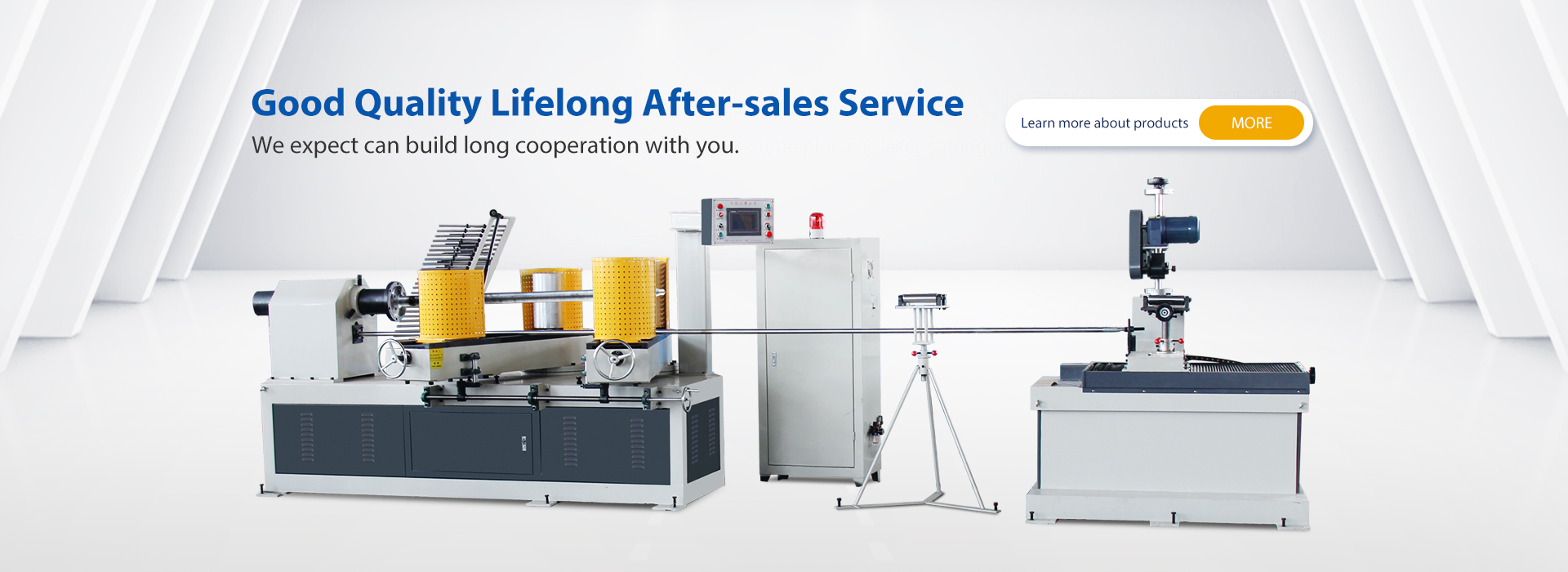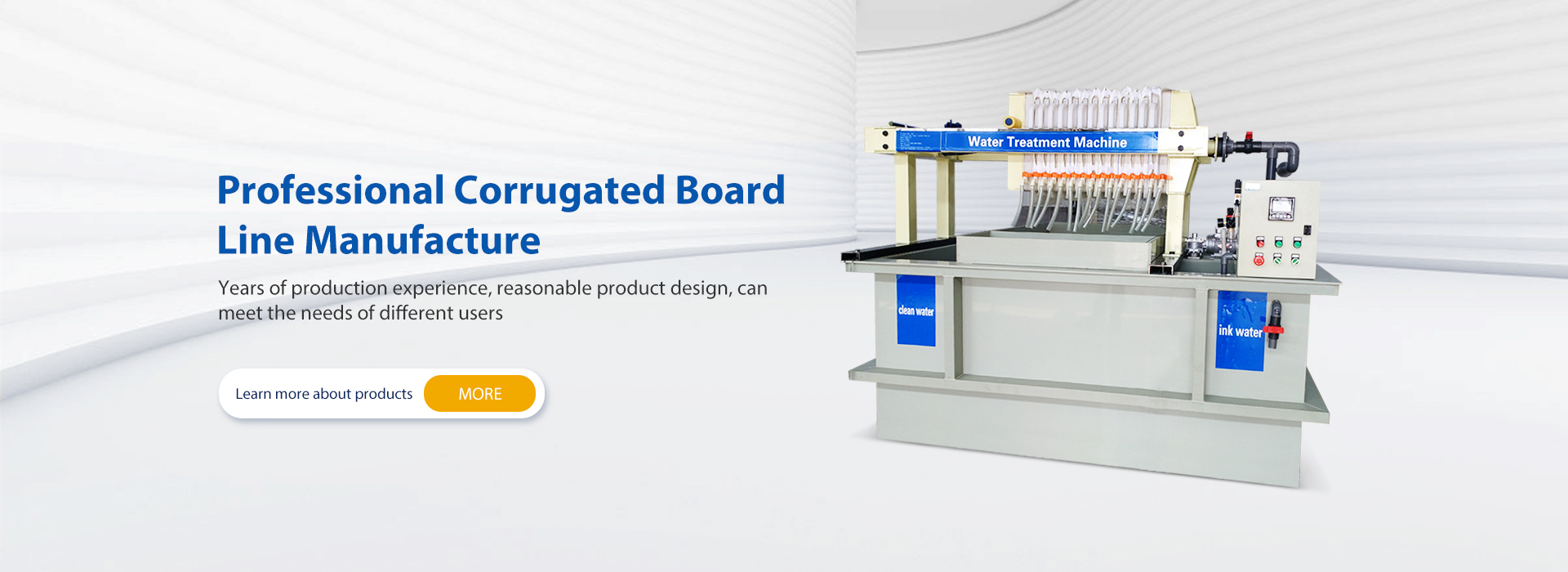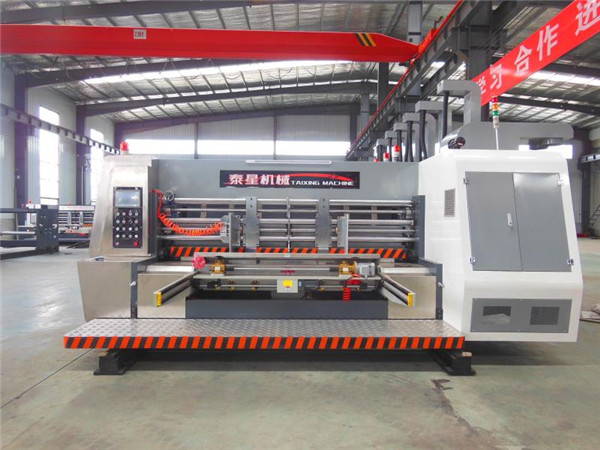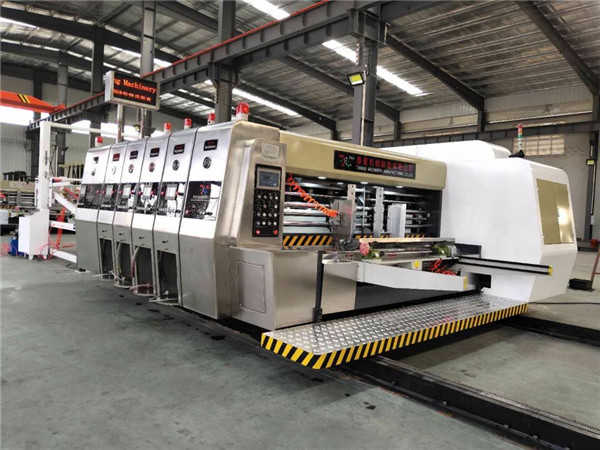At present, the main methods and characteristics of carton making at home and abroad
At present, there are two common printing Zhi brush methods for corrugated boxes: one is the printing (direct flexo) process. In the past, this process was used to print only simple lines and characters. Now it can be used for color screen printing. It is a commonly used process in China.
The other is the pre printing process, that is, before the production of corrugated board, the face paper is printed (directly on the web paper), and then the printed face paper is sent to the corrugated board production line to fit with the bottom paper. In addition, for the printing of fine corrugated such as e corrugated, the surface of the paperboard can also be printed by offset printing (sheet fed). After printing, it can be combined with the corrugated core paper.
At present, the printing of corrugated board in China is divided into offset printing and then laminating synthetic board, flexographic direct printing, pre printing and several special printing and box making methods.
On the development trend of flexographic printing from the European and American flexographic printing market
With the continuous development of science and technology, the process of flexographic printing is also changing. Its printing quality, overprint accuracy and other technical indicators are no inferior to offset printing and gravure printing. At the end of last century, the turnover of flexographic printing in the United States has exceeded 72.8 billion US dollars, increasing at a double-digit rate every year. Flexographic printing accounts for about 75% of the whole packaging printing market.
Among the four major printing processes in developed countries, the market share of offset printing, gravure printing and embossing shows a downward trend. Offset printing has decreased from 55% in the early 1950s to about 35% at present, and gravure printing has also decreased from 30% to about 15% at present. Only the market share of flexographic printing process shows an increasing trend. The market share increased from only 4% in the 1950s to about 32% in 2005, an increase of 8 times, almost equal to offset printing.
Flexographic printing is a relief printing method, originally known as aniline printing. It originated in the United States in the early 1920s. It has not been developed because the aniline dye ink used is toxic. Since then, ink manufacturers began to use recognized and acceptable pigment agents. In 1952, it was renamed flexographic process at the 14th packaging seminar in the United States, and it was also translated as Furui relief printing in Taiwan. Since the mid-1970s, due to the progress of the material industry, especially the advent of polymer resin plate and cermet anilox roller, the development of flexographic printing has made a qualitative leap and has become the fastest-growing printing mode in the world. Especially in the United States, it has been fully developed. Both the manufacturing technology of printing press and the application technology of flexographic printing represent the high level of flexographic printing. Most of the commodity packaging seen in the domestic market of the United States are almost flexographic printing products. It is estimated that at present, the market share of flexographic printing in the United States accounts for 70% in the field of flexible packaging printing; 85% in label printing; 98% in the field of corrugated printing; It accounts for 25% in the field of carton printing. It also accounts for 60%, 35%, 85% and 2% respectively in Europe. In the United States, even 20% of newspapers are printed in Flexo. These figures are enough to prove the vitality of flexographic printing. In the United States, flexographic printing has been widely used in various printing fields, especially in the field of packaging printing.
Flexographic press has a wide range of suitable printing carriers, and the printing quality has been gradually close to offset printing and gravure printing. At present, flexographic printing is widely used in all kinds of packaging printing materials, which can fully meet the requirements of all kinds of users for printing materials, and has been recognized by the majority of users. Such as cigarette packs, pharmaceutical packaging, food packaging, trademark label printing, etc. According to statistics, at present, flexographic printing accounts for about 30% in the cigarette bag industry and 15% in all kinds of trademarks and labels in China; Self adhesive printing accounts for about 35%; Other printing accounts for about 22%.
Flexographic printing machine is a linkage production line, which is formed at one time from paper roll, printing, gluing, die cutting and winding. This process can not only improve the production efficiency, but also reduce the product cost. Flexographic printing production supply chain has been formed and developed greatly. Due to the rapid development of flexographic printing technology in China, it has driven the development, research and production of domestic flexographic printing press, anilox roller, plate material, ink and plate making equipment and equipment supporting flexographic printing. The formation and development of the above flexographic production supply chain greatly supports the development of flexographic printing.
Basic principle of flexographic corrugated board printing
Flexographic printing is a kind of relief printing technology. It uses a flexible printing plate and a short ink path transmission system with anilox ink transfer roller as the core. The graphic part of the printing plate is convex and the blank part is concave. During printing, the anilox roller evenly applies a certain thickness of ink layer to the graphic part of the printing plate, and then under the pressure of the embossing cylinder, the ink layer of the graphic part is transferred to the surface of the substrate to form an imprint.
Flexographic plates are divided into rubber plates and photosensitive resin plates. The plate material of rubber plate is natural rubber or synthetic rubber; There are many kinds of photosensitive resin plates. According to their forms, they can be divided into liquid photosensitive resin plates and solid photosensitive resin plates. Due to the rough surface of corrugated paper, thick flexible plate must be selected. If some high-grade products are to be printed, flexible plate with high resolution and small expansion rate must be selected. In recent years, with the continuous development of thin plate technology, the thickness of printing plate is decreasing, but the resolution and printing quality are higher and higher.
Compared with flexo, rubber version has high hardness and low printing resistance. However, it has low cost, economic price, convenient manual or laser engraving, and has a high share in the field of ordinary cartons. Therefore, different printing plates should be selected for different products according to the actual situation, so as to achieve the purpose of economy and practicality.
Anilox ink transfer roller is the core of flexographic printing press. It has many types, such as chrome anilox roller and ceramic anilox roller. No matter which one, its structure, function and principle are the same.
The concave mesh groove line on the surface of the anilox ink transfer roller forms a mesh hole, which is used to control the transfer amount of ink during printing. The distribution number of net holes per centimeter in the direction with the shortest net hole spacing is the number of reticulated lines, which indicates the distribution density of net holes. The greater the number of anilox lines, the greater the mesh hole density, the smaller the mesh hole volume, the smaller the ink transfer, and vice versa. Of course, the mesh hole shape also has an impact on the ink transmission.
The mesh holes on the anilox roller have the same size and uniform distribution, which can effectively transfer and control the ink amount, make the ink film thickness uniform, the ink amount consistent, and small, resulting in the phenomenon that it is not easy to apply ink due to the viscosity of ink. The high-precision anilox roller can ensure the transfer of ink under very small pressure, reduce the ink phenomenon at the edge of graphics and texts, and the ink is evenly applied, which is not easy to appear the rigid contour of the edge. Anilox roller should have high durability and corrosion resistance. The application of laser engraving ceramic anilox roller greatly improves the service life of anilox roller and the stability of ink transfer.
Advantages of corrugated box flexographic printing
Flexo can not only copy the field version, but also copy the screen version. Corrugated box printing has developed from monochrome and two-color to multi-color screen version, which is an inevitable law. Flexo can make both field version and screen version, which meets the trend of the times and the requirements of corrugated paper printing; And plate making is convenient and of good quality.
Flexographic plate can compress and deform
Corrugated paper is a kind of material with the worst thickness error and surface flatness in the printing substrate, especially a and C corrugated. Flexographic board can compensate the thickness error and surface unevenness of corrugated paper with its own compression deformation in printing, so as to meet the pressure requirements, make the ink color more uniform, improve the quality and reduce the scrap rate. Therefore, the flexible plates used for corrugated boxes are usually relatively thick, with a general thickness of 2mm ~ 7mm.
Flexographic printing belongs to light pressure printing
Due to the corrugated, the pressure is uneven during printing, the pressure at the high part of the corrugated is large, and the pressure at the low part of the corrugated is light, which will also lead to the phenomenon that the lower part of the corrugated paper can not contact the printing plate and the ink can not be printed. Therefore, flat printing and gravure printing can not overcome the defects of thickness error and uneven pressure of the corrugated. Flexible printing belongs to light pressure printing (kiss pressing). On the one hand, the printing plate is compressed evenly and contacts the corrugated paper, Moreover, the corrugated height will not produce high pressure and serious traces
Flexographic printing can use water-based ink
The paper is interwoven by fibers, and its hydrophilicity is better than lipophilicity. Therefore, printing only needs to gently contact the corrugated board, and the water-based ink will be almost completely absorbed by the corrugated board. Lithography belongs to long ink path ink transfer, while flexible ink, short ink path ink transfer. The water-based ink has the advantages of no pollution, low cost, fast drying and convenient operation. Therefore, flexo has light pressure and water-based ink is an ideal combination for corrugated box printing.
Flexographic printing machine is simple in structure and suitable for enlargement
The corrugated box has a large area and a length of 2m ~ 3M. If the offset ink transfer system is adopted, the equipment is huge and it is difficult to manufacture, operate and maintain. However, the flexographic printing machine has a simple structure, four rollers are made into a color group, and the drum diameter is appropriately larger, which can improve the mechanical degree and stability, and it is very convenient for plate loading, adjustment and cleaning. Due to the maturity of plate materials, Anilox rollers, water-based ink products and technology, the flexographic printing technology for corrugated boxes has developed rapidly.
It can form a linkage production line with other types of work
Corrugated board is heavy, moving one by one is labor-intensive, and can not meet the requirements of mass production, nor can it form a scale. Due to its simple structure, the flexographic press can form a linkage production line with other processes, which greatly improves the work efficiency and reduces the labor intensity. Now, most corrugated box printing machines are linked with indentation and slotting. Machines with good functions can be connected with indentation, slotting, die cutting, gluing, box making and counting. The products from the machine can be directly transported to the truck, and the printing speed is very high
The above six points show that flexographic printing technology is the most ideal printing method for corrugated boxes. It is not only suitable for the characteristics of corrugated boards, but also meets the product quality requirements, but also forms large-scale production. It is a high-quality, high-speed and efficient corrugated box printing method.
Therefore, due to its good printing quality, adapting to a wide range of printing materials, high production efficiency, convenient and fast operation, easy maintenance, less investment, high income, non-toxic and pollution-free, flexographic printing has developed rapidly in China and is gradually becoming the first choice of packaging printing.
Flexographic presses are generally divided into three types: laminated, unit and satellite. Different types of flexographic presses have different structural characteristics and are also suitable for different substrates. Therefore, when selecting the type of flexographic press, targeted selection should also be made according to the types and quantities of customers and active sources.
Flexographic printing technology of corrugated box
Process flow of flexographic direct printing flexographic carton production
Corrugated board production → paperboard direct printing (flexo) → die cutting and slotting → adhesive nail box
Development prospect of flexographic printing in China
In China, the development of flexographic printing is still relatively slow, because a new printing method needs a certain market entry point and foothold, and the formation of these two points needs a process. From the perspective of environmental protection, flexographic printing is indeed a very good way of environmental protection printing, but specific to the printing plant, economic interests are related to its life and death. Several domestic flexographic equipment suppliers agree that the development prospect of flexographic printing in China is very broad, which is driven by several factors:
1. Flexographic printing has its own advantages – fast, green and environmental protection, and the supporting processes are also relatively fast. In European and American countries, flexographic printing has occupied most of the share of the whole printing field. It is understood that some customers in Europe, the United States and Japan require the products exported from China to use more environmentally friendly printing methods. In view of this, some large domestic manufacturers will also adopt environmentally friendly packaging at the request of customers, and realize that flexographic printing can save resources and maintain the human living environment. This is also a factor to promote the development of flexographic printing. From the perspective of national macro policies, from April 1, 2007, the state will adopt a market access system for food and pharmaceutical packaging, strengthen the management of food packaging with mandatory means, strictly limit the amount of residual solvent in packaging, and put forward higher requirements for food and pharmaceutical packaging, This provides a development opportunity for domestic flexographic presses to enter the market in batches. There will be a great demand for domestic flexographic machines in the next decade.
2. There are opportunities to develop flexographic printing in both offset and gravure printing fields, because offset printing occupies a certain share in China’s printing market and the competition is very fierce. While doing offset printing, some large enterprises gradually realize the benefits of flexographic printing – cost saving (20% ~ 30% less than offset printing in terms of packaging). It can be said that flexographic printing is another choice for customers. Some large group companies such as Wal Mart, LG, Samsung and Foxconn will consider the cost and choose flexographic packaging when purchasing packaging. Therefore, some packaging printers may invest in flexographic printing in the future.
Purchasing principles of flexographic printing press
General principles of purchase
Flexographic printing machine has significant production advantages such as small equipment investment, less machine floor area, less use of labor resources, convenient operation, low production cost, wide printing adaptability, stable product quality and high printing efficiency. Therefore, flexographic printing press is suitable for printing various structural printing businesses, especially for factories focusing on packaging products. The application of flexographic printing press is an important choice to improve economic benefits and product quality, which is also the main reason for the increasing application of flexographic printing press in China in recent years. When purchasing flexographic presses, packaging and printing factories should correctly select the model and configuration, which is a crucial procurement control link. Selecting the model is to determine what kind of machine to choose according to the characteristics of the factory’s product structure. Flexographic printing machines include ordinary, narrow width, wide width and special models. The printing unit has several models ranging from groups. It is necessary to determine what type of machine to choose according to what kind of products to print. Industry experts believe that enterprises must consider their own development, market development and changes, as well as different requirements such as corrugated box quality, cost and delivery cycle.
Selection of printing type
The wide width flexographic press applicable to the corrugated box printing process is actually one of the ordinary flexographic presses. It is only to better meet the special requirements of corrugated box printing, including the technical parameters of printing width, printing width length, screen wire and field, plate thickness, automatic control of paper winding, material cutting and automatic control of the whole machine Reasonable combination of configuration, etc.
The selection of flexographic press equipment type is mainly determined according to the market requirements faced by users and the main parameters of the equipment. Due to the significant improvement of current equipment manufacturing technology and system control technology, there is no problem of who is better or worse in printing quality, printing speed and technical grade of unit type, satellite type and cascade type. The difference is how to meet user requirements and control equipment cost. In the medium and high-grade flexographic printing equipment, the use, maintenance and equipment manufacturing costs are different.
Matching of equipment and products
Then the specific matching of equipment and products has become the key. The selection of printing equipment grade, function, speed and door width must be objective. Therefore, understanding various technologies of flexographic printing, understanding and analyzing the market and judging its adaptability are not only the links that every enterprise that selects flexographic printing equipment must pay attention to, but also the pre-sales services that equipment suppliers must provide. Therefore, there is no good equipment, only the most suitable equipment.
Tom (oversea manager) Phone:0086 13303078975 / 17772697357(whatsapp,wechat,line)
Email :cartonmachine.tomwang@aliyun.com
https://www.wdcartonmachine.com
Post time: Sep-02-2021

